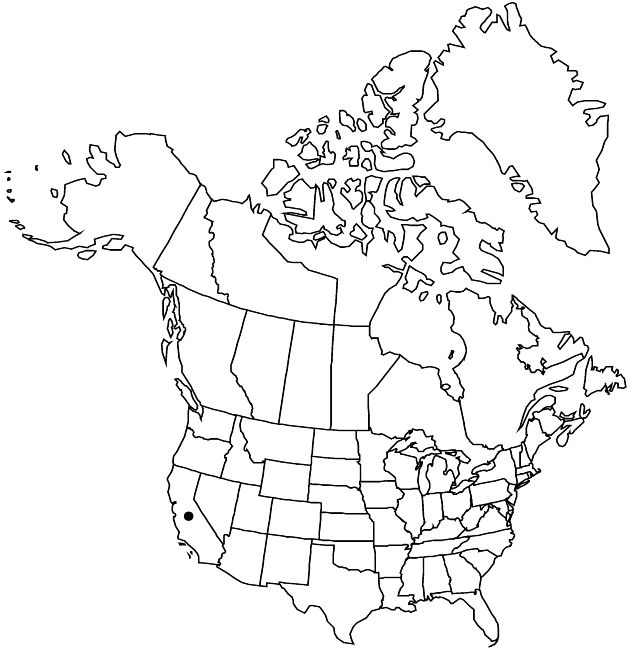Malacothrix phaeocarpa
Madroño 40: 101, fig. 1. 1993.
Annuals, 5–44 cm. Stems 1–4, erect to ascending, usually branched proximally and distally, glabrous (usually glaucous). Cauline leaves: proximal obovate, usually pinnately lobed (lobes 3–8 pairs, ± equal, bases white-hairy), ± fleshy, ultimate margins dentate, faces glabrous; distal reduced (sometimes 2–4-dentate near bases). Calyculi of 8–12+, ovate to lanceolate bractlets, hyaline margins 0.05–0.3 mm wide. Involucres ± campanulate, 5–8 × 2–6 mm. Phyllaries 18–22+ in 2–3 series, oblong or lanceolate to linear, hyaline margins 0.05–0.2 mm wide, faces glabrous. Receptacles not bristly. Florets 30–65; corollas white, 5–8 mm; outer ligules exserted 1–3 mm. Cypselae ± cylindro-funnelform or weakly prismatic, 1.2–2 mm, ribs extending to apices, ± equal or 5 more prominent than others; pappi 0 or crenate crowns (0.01–0.1 mm). Pollen 70–100% 3-porate. 2n = 14.
Phenology: Flowering Apr–Jun.
Habitat: Diatomaceous shale, open chaparral burns, slides, openings in Bishop pine-Douglas fir woodlands
Elevation: 100–1400 m
Discussion
Malacothrix phaeocarpa grows in Monterey County (near Jolon above Boucher’s Gap), San Luis Obispo County (Santa Lucia Mountains), Santa Barbara County (Purissima Hills and Santa Inez Mountains), and Santa Clara County (Santa Cruz Mountains).
Selected References
None.
